Semiconductor Lasers
Definition: lasers based on semiconductor gain media
More general term: solid-state lasers
More specific terms: laser diodes, optically pumped surface-emitting semiconductor lasers, quantum cascade lasers
German: Halbleiterlaser
Categories:  optoelectronics,
optoelectronics,  laser devices and laser physics
laser devices and laser physics
Author: Dr. Rüdiger Paschotta
Cite the article using its DOI: https://doi.org/10.61835/uu0
Get citation code: Endnote (RIS) BibTex plain textHTML
Semiconductor lasers are solid-state lasers based on semiconductor gain media, where optical amplification is usually achieved by stimulated emission at an interband transition under conditions of a high carrier density in the conduction band.
Physical Origin of the Gain
The physical origin of gain in an optically pumped semiconductor (for the usual case of an interband transition) is illustrated in Figure 1. Without pumping, most of the electrons are in the valence band. A pump beam with a photon energy slightly above the band gap energy can excite electrons into a higher state in the conduction band, from where they quickly decay to states near the bottom of the conduction band. At the same time, the holes generated in the valence band move to the top of the valence band. Electrons in the conduction band can then recombine with these holes, emitting photons with an energy near the bandgap energy. This process can also be stimulated by incoming photons with suitable energy. A quantitative description can be based on the Fermi–Dirac distributions for electrons in both bands.
Note that this process works well only for a semiconductor with a direct band gap. In indirect band gap semiconductors (e.g. silicon), the conduction band electrons in the holes acquire substantially different wavenumbers, and that does not allow for optical transitions due to problems with momentum conservation.
Electrical and Optical Pumping

Most semiconductor lasers are laser diodes, which are pumped with an electric current in a region where an n-doped and a p-doped semiconductor material meet. However, there are also optically pumped semiconductor lasers, where carriers are generated by absorbed pump light, and quantum cascade lasers, where intraband transitions are utilized.
Common Semiconductor Materials
Common materials for semiconductor lasers (and for other optoelectronic devices), all having a direct band gap, are
- GaAs (gallium arsenide)
- AlGaAs (aluminum gallium arsenide)
- GaP (gallium phosphide)
- InGaP (indium gallium phosphide)
- GaN (gallium nitride)
- InGaAs (indium gallium arsenide)
- GaInNAs (indium gallium arsenide nitride)
- InP (indium phosphide)
- GaInP (gallium indium phosphide)
As the photon energy of a laser diode is close to the bandgap energy, compositions with different bandgap energies allow for different emission wavelengths. For the ternary and quaternary semiconductor compounds, the bandgap energy can be continuously varied in some substantial range. In AlGaAs = AlxGa1-xAs, for example, an increased aluminum content (increased x) causes an increase in the bandgap energy.
While the most common semiconductor lasers are operating in the near-infrared spectral region, some others generate red light (e.g. in GaInP-based laser pointers) or blue or violet light (with gallium nitrides). For mid-infrared emission, there are e.g. lead selenide (PbSe) lasers (lead salt lasers) and quantum cascade lasers.
Apart from the above-mentioned inorganic semiconductors, organic semiconductor compounds might also be used for semiconductor lasers. The corresponding technology is by far not mature, but its development is pursued because of the attractive prospect of finding a way for cheap mass production of such lasers. So far, only optically pumped organic semiconductor lasers have been demonstrated, whereas for various reasons it is difficult to achieve a high efficiency with electrical pumping.
Types of Semiconductor Lasers
Even for a given semiconductor material basis, there is a great variety of different semiconductor lasers, spanning wide parameter regions and many different application areas:
- Small edge-emitting laser diodes generate a few milliwatts (or up to 0.5 W) of output power in a beam with high beam quality. They are used e.g. in laser pointers, in CD players, and for optical fiber communications.
- External cavity diode lasers contain a laser diode as the gain medium of a longer laser cavity. They are often wavelength-tunable and exhibit a small emission linewidth.
- Both monolithic and external-cavity low-power levels can also be mode-locked for ultrashort pulse generation.
- Broad area laser diodes generate up to a few watts of output power, but with significantly poorer beam quality.
- High-power diode bars contain an array of broad-area emitters, generating tens of watts with poor beam quality.
- High-power stacked diode bars can generate extremely high powers of hundreds or thousands of watts.
- Surface-emitting lasers (VCSELs) emit the laser radiation in a direction perpendicular to the wafer, delivering a few milliwatts with high beam quality.
- Optically pumped surface-emitting external-cavity semiconductor lasers (VECSELs) are capable of generating multi-watt output powers with excellent beam quality, even in mode-locked operation. Electrically pumped photonic crystal surface-emitting lasers promise to reach similar performance.
- Quantum cascade lasers operate on intraband transitions (rather than interband transitions) and usually emit in the mid-infrared region, sometimes in the terahertz region. They are used e.g. for trace gas analysis.
Typical Characteristics and Applications
Some typical aspects of semiconductor lasers are:
- Electrical pumping with moderate voltages and high efficiency is possible particularly for high-power diode lasers, and allows their use e.g. as pump sources for highly efficient solid-state lasers (→ diode-pumped lasers) and even as direct diode lasers.
- A wide range of wavelengths are accessible with different devices, covering much of the visible, near-infrared and mid-infrared spectral region. Some devices also allow for wavelength tuning.
- Small laser diodes allow fast switching and modulation of the optical power, allowing their use e.g. in transmitters of fiber-optic links.
Such characteristics have made semiconductor lasers the technologically most important type of lasers. Their applications are extremely widespread, including areas as diverse as optical data transmission, optical data storage, metrology, laser spectroscopy, laser material processing, pumping solid-state lasers (→ diode-pumped lasers), and various kinds of medical treatments.
Pulsed Output
Most semiconductor lasers generate a continuous output. Due to their very limited energy storage capability (low upper-state lifetime), they are not suitable for pulse generation with Q switching, but quasi-continuous-wave operation often allows for significantly enhanced powers.
Also, semiconductor lasers can be used for the generation of ultrashort pulses with mode locking or gain switching. The average output powers in short pulses are usually limited to at most a few milliwatts, except for optically pumped surface-emitting external-cavity semiconductor lasers (VECSELs), which can generate multi-watt average output powers in picosecond pulses with multi-gigahertz repetition rates.
Modulation and Stabilization
A particular advantage of the short upper-state lifetime is the capability of semiconductor lasers to be modulated with very high frequencies, which can be tens of gigahertz for VCSELs. This is exploited mainly in optical data transmission, but also in spectroscopy, for the frequency stabilization to reference cavities, etc.
More to Learn
Encyclopedia articles:
Suppliers
The RP Photonics Buyer's Guide contains 102 suppliers for semiconductor lasers. Among them:

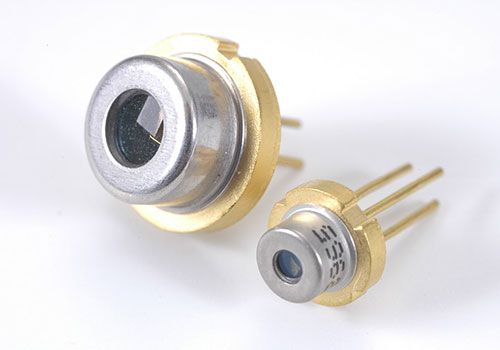
TOPTICA Photonics
TOPTICA is renowned for providing the widest wavelength coverage of diode lasers on the market (190 – 3500 nm), providing high-power diode lasers with great ease of use even at exotic wavelengths. TOPTICA diode lasers enable a big variety of demanding applications in quantum optics, spectroscopy, biophotonics, microscopy, test & measurement, as well as materials inspection.

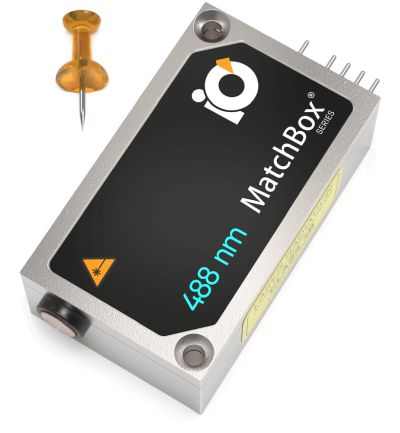
Integrated Optics
There are more than 150 CW laser configurations in the MatchBox product family. It contains a wide range of diode lasers, emitting between 375 nm and 1550 nm, coming in regular or narrow spectrum versions, having multiple options of output: MM/SM/PM fiber coupled, free space or SMA port. Fiber coupling is inside the sealed housing and temperature stabilized. MatchBox lasers have a very compact housing, which contains optical layout, driver electronics, that can enable up to 10 MHz externally triggered modulation and TEC temperature control. MatchBox lasers can also combine up to 4 different diode-wavelengths in one single housing with the same record-small footprint of 30 × 50 × 18 mm.


QPC Lasers
QPC Lasers full vertical integration from epitaxy through packaging allows us to offer standard and custom diode solutions in packages ranging from C-mounts to complete OEM light engines that provide performance without compromise. Features include unique Brightlock monolithic "on-chip" wavelength control for unmatched linewidth and spectral control.


Frankfurt Laser Company
Frankfurt Laser Company offers the widest wavelength range for laser diodes on the world market from 370 nm to 12 µm, single mode & multimode, broad area, DFB and DBR, fiber Bragg grating stabilized, quantum cascade lasers and VCSELs. We offer wavelength selection and custom packaging; please contact us to discuss your requirements.


RPMC Lasers
RPMC Lasers offers the largest selection available of wavelengths and packages for semiconductor laser diodes. Our various diode laser products include single and multimode laser diodes, wavelength stabilized DFB and VBG laser diodes, free-space & fiber-coupled options, laser diode bars and stacks, quantum cascade laser diodes. We also offer multi-wavelength laser diodes and tunable laser diodes. We offer free-space and fiber-coupled options on most devices, with many package options including but not limited to chip on carrier, TO can, HHL, butterfly, MCC, and turn-key systems. Standard and custom options available – space-qualification experience. Let RPMC help you find the right laser today!


Sacher Lasertechnik
Sacher Lasertechnik is a specialist for semiconductor laser sources. We have a wide range of diode lasers for scientific and industrial applications, covering a wide range of emission wavelengths and output powers. Apart from DFB and DBR lasers, Fabry–Pérot and tapered amplifier diodes, we offer quantum cascade lasers. Besides, we have modules e.g. with internal frequency conversion, such as the Jaguar UV laser and terahertz sources.


eagleyard Photonics
TOPTICA EAGLEYARD is a global leading provider of high power laser diodes with wavelengths from 630 nm – 1120 nm based on GaAs (Gallium Arsenide). Our products combine maximum power, highest durability and excellent beam quality – a perfect match for high-end applications.

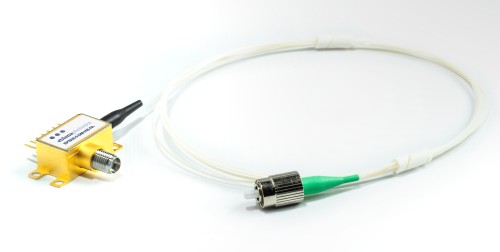
Eblana Photonics
Eblana Photonics' core product offerings are based on our patented Discrete-Mode (DFB like) manufacturing technology, which delivers industry leading performance with fully scalable, consistent production and integration capability.
Eblana’s products are used extensively for trace gas sensing and environmental monitoring in the near- and mid-IR.
In addition, the inherent low linewidth performance of the DM platform in comparison to typical DFB lasers is uniquely suited to distributed fibre sensing and LIDAR applications, as well as scientific and metrology projects.

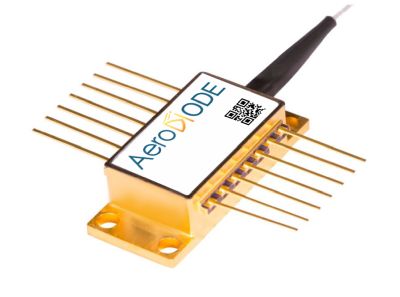
AeroDIODE
SHIPS TODAY: AeroDIODE offers fiber-coupled laser diodes between 520 nm and 1650 nm as stock items or associated with a CW laser diode driver or pulsed laser diode driver. They are compatible with our high speed nanosecond pulsed drivers or high power CW drivers with air cooling for the multimode high power laser diode versions. The single mode laser diodes (either Fabry–Pérot laser diode or DFB laser diode) can reach high power in nanosecond pulse regime up to 500 mW. Most turn-key diode & driver solutions are optimized for single-shot to CW performances with pulse width lengths down to 1 ns. The laser diode precision pulses are generated internally by an on-board pulse generator, or on demand from an external TTL signal. Many multimode versions are available with CW emission up to 300 W in a 200-µm core multimode fiber or up to 250 W in a 135-µm core fiber or 160 W in a 105 µm core fiber.
See also our tutorial on fiber-coupled laser diodes.


Sheaumann Laser
Sheaumann Laser is a vertically integrated manufacturer for semiconductor lasers. Our capabilities include wafer fabrication, MOCVD growth, chip and bar processing, laser packaging and reliability testing.


Alpes Lasers
Alpes Lasers designs and manufactures semiconductor lasers, particularly quantum cascade lasers, with wavelengths from 4 to 14 μm and powers up to several watts. These lasers are highly compact and efficient, making them ideal for applications in the mid-IR with strict size constraints.
Bibliography
| [1] | J. V. Moloney et al., “Quantum design of semiconductor active materials: laser and amplifier applications”, Laser & Photon. Rev. 1 (1), 24 (2007); https://doi.org/10.1002/lpor.200610003 |
| [2] | W. W. Chow and S. W. Koch, Semiconductor-Laser Fundamentals, Springer, Berlin (1999) |
| [3] | B. E. A. Saleh and M. C. Teich, Fundamentals of Photonics, John Wiley & Sons, Inc., New York (1991) |
Questions and Comments from Users
Here you can submit questions and comments. As far as they get accepted by the author, they will appear above this paragraph together with the author’s answer. The author will decide on acceptance based on certain criteria. Essentially, the issue must be of sufficiently broad interest.
Please do not enter personal data here; we would otherwise delete it soon. (See also our privacy declaration.) If you wish to receive personal feedback or consultancy from the author, please contact him, e.g. via e-mail.
By submitting the information, you give your consent to the potential publication of your inputs on our website according to our rules. (If you later retract your consent, we will delete those inputs.) As your inputs are first reviewed by the author, they may be published with some delay.

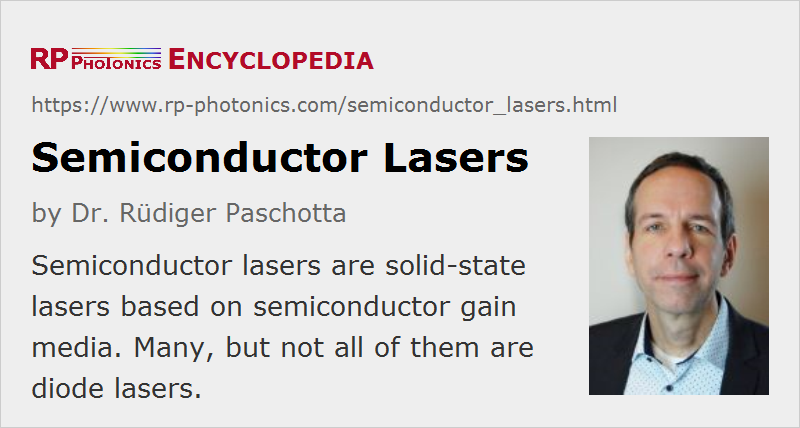
Share this with your friends and colleagues, e.g. via social media:
These sharing buttons are implemented in a privacy-friendly way!